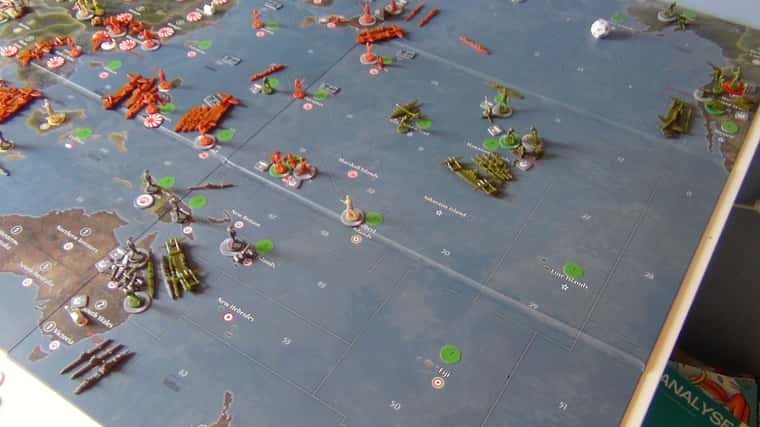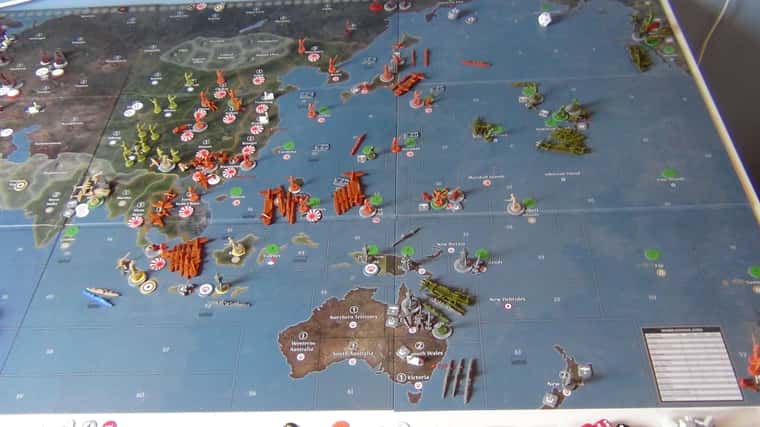I now think a similar idea could apply to Finland.
Its 4 infantry can only move in the following territories:
Finland
Vyborg
Karelia
Norway
Sweden (not if the Axis are at war with the strict neutrals)
Nice! I’m starting to warm up to that map. The original’s still better though.
I am such a big fan of this new map! China finally doesn’t look stupid anymore (in the previous map its shape was super distorted).
Just looking at the map makes me want to play!
@victoryfirst said in Global 1940 & 1943 Expansions Game Reports:
Just looking at the map makes me want to play!
heh heh well Japan’s up :)
Global 1943, No. 4 Game Report: Round Late 1945:
This is the only post in the No. 4 Game Report.
Players:
Axis: Butch Cassidy
Allies: The Captain
Germany:
From game start Early 1943, Germany started to re-organize the combat formations on the Eastern Front.
Reinforcements from Germany and Western Germany were sent in all directions to strengthen the frontline units.
Gradually a build up of Panzer units were re-inforcing the armies on the Eastern Front.
Italy was taken over in Late 1943.
Soviet Union:
The Soviets were launching massive counter attacks along the entire Eastern Front, pushing back the Germans.
In Early 1944 the Soviets launched a massive offensive that annihilated German Army Group Center.
Strong German Panzer Unit Formations reached the frontline just in time to prevent a total collapse of the Eastern Front.
In Late 1944 the Soviets launched another massive offensive at Kursk - destroying most of German Army Group South.
Battle of Kursk
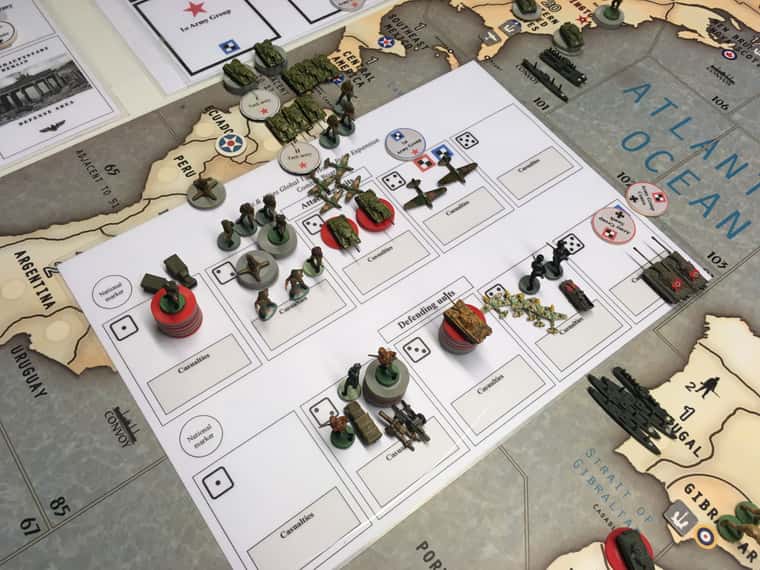
After the Battle of Kursk:

Again, Germany was able to reinforce the scattered frontline units with Panzer formations.
As US and UK forces landed in Western Europe and Norway, the Soviets were able to halt all German advance on the Eastern Front.
Japan:
From Early 1943 and onwards, Japan was under extreme pressure from Allied troops.
US and UK units launched massive attacks against all Japanese strongholds and occupied islands and territories.
In both Asia and the Pacific Japan was unable to halt the Allied advance - and by Late 1944, the last Japanese units on the Pacific islands were annihilated - and in China the last Japanese units were fighting a desperate battle against an overwhelming number of Allied units.
United States:
In Early 1943 the US Navy launched a series of amphibious assaults in the Pacific, and strengthened their gains in North Africa.
US land forces were increased on a massive scale - and a huge Transport Fleet was ready to carry the combat units to the Battle Zones.
By Early 1945, all islands in the Pacific were under Allied control - and the Imperial Japanese Navy was annihilated in a massive naval battle.
In Early 1944 and Late 1944 US landings in Europe secured the Western Front - and ultimately threatened the Third Reich - bringing an end to further German advance on all fronts.
United Kingdom:
From Early 1943 UK re-inforcements were transported by Strategic Rail Movement from South Africa to India, stregthening the UK frontline units in Asia in their struggle against the Imperial Japanese Army.
In Late 1943 and Early 1944 German Paratrooper units supported by an amphibious Landing Craft Assault with Infantry and Panzer units were able to cut off the UK supply lines from South Africa to India, by capturing Iraq, Trans-Jordan and Syria.
In Late 1944, Soviet troops captured Iraq, opening the UK supply lines to India again.
In Late 1944 and Early 1945, UK units liberated most of China - encircling the last Japanese combat units in Kweichow - sealing the fate of further Japanese expansion in Asia.
By Late 1945, the last remaining Axis forces were fighting for their lives - ending the War with an Allied Economic Victory.
The Military Situation by Late 1945:
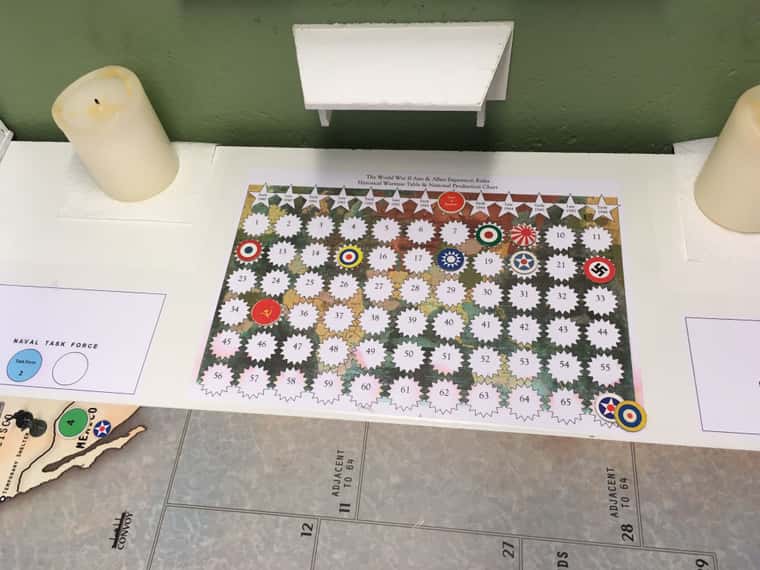


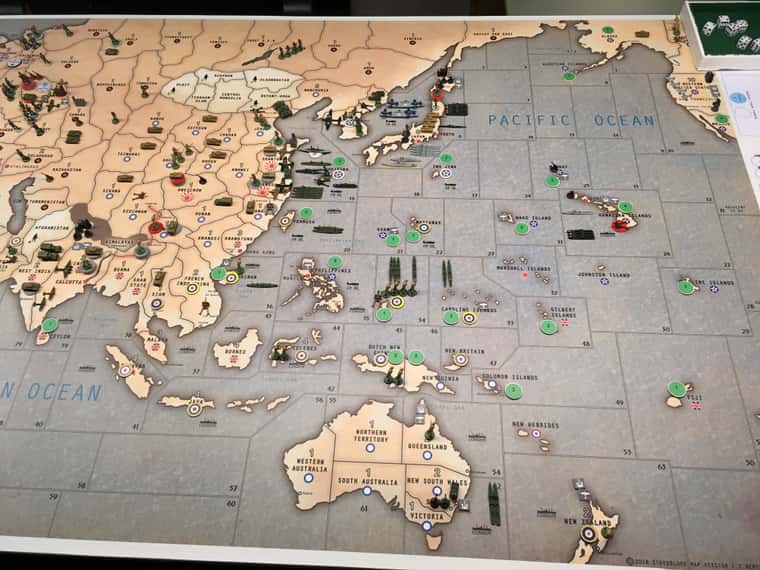
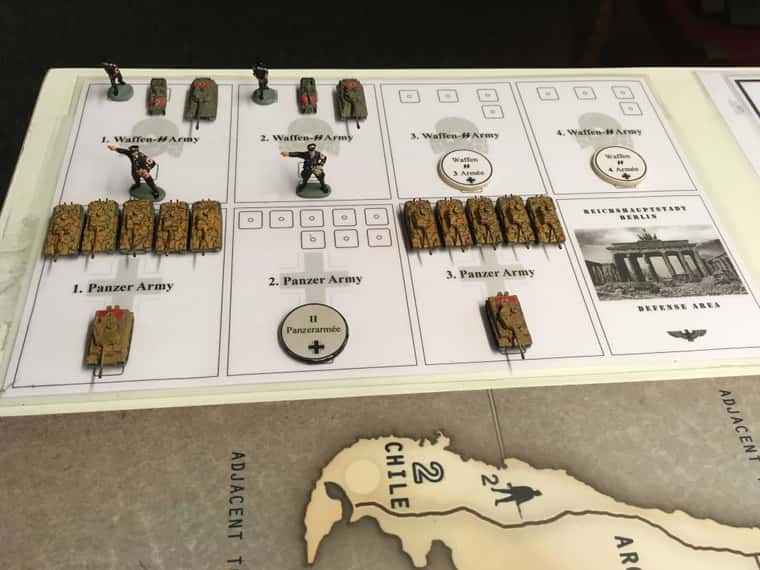
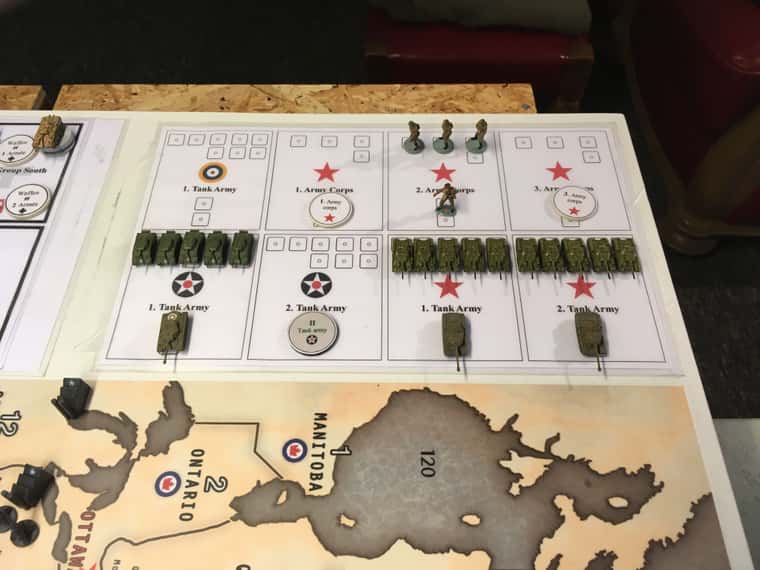
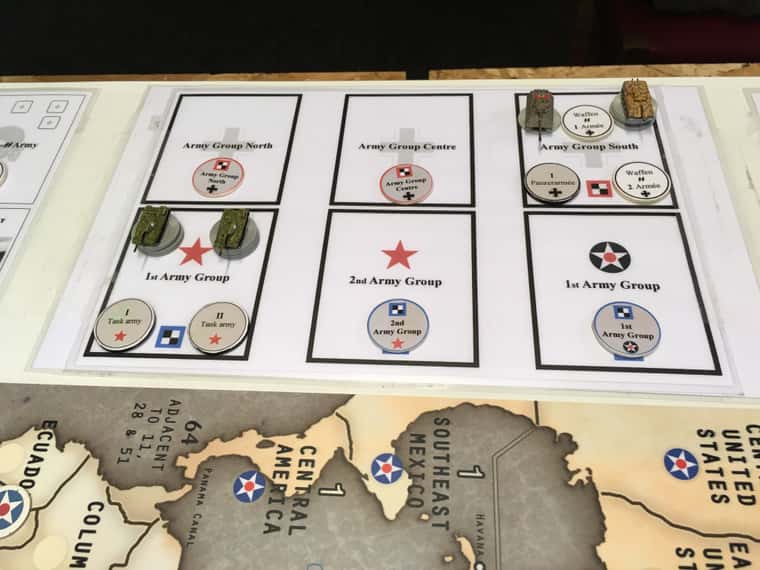
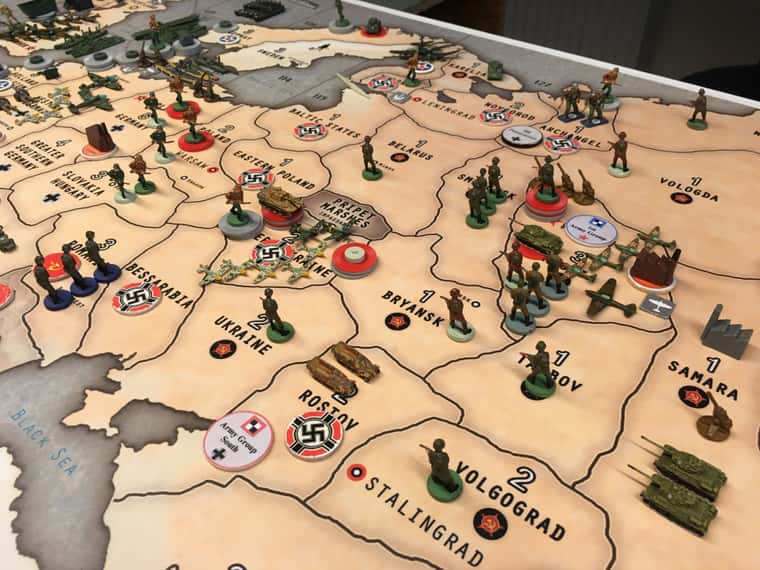
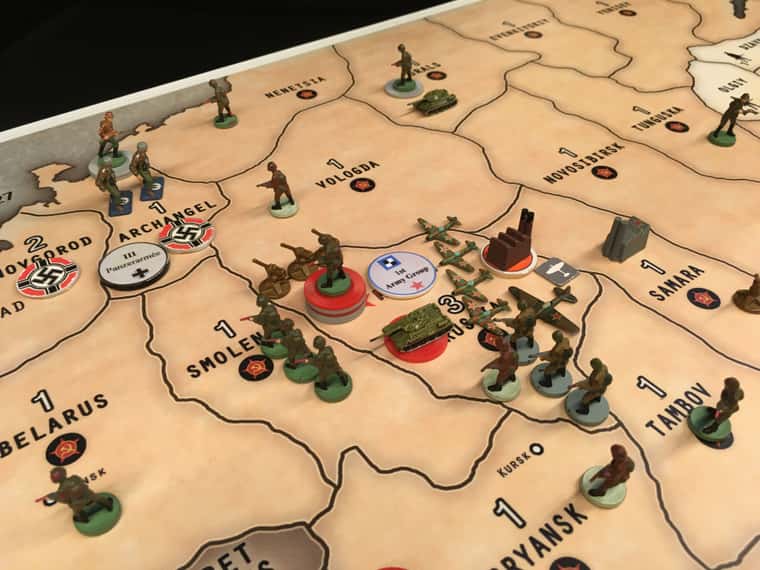
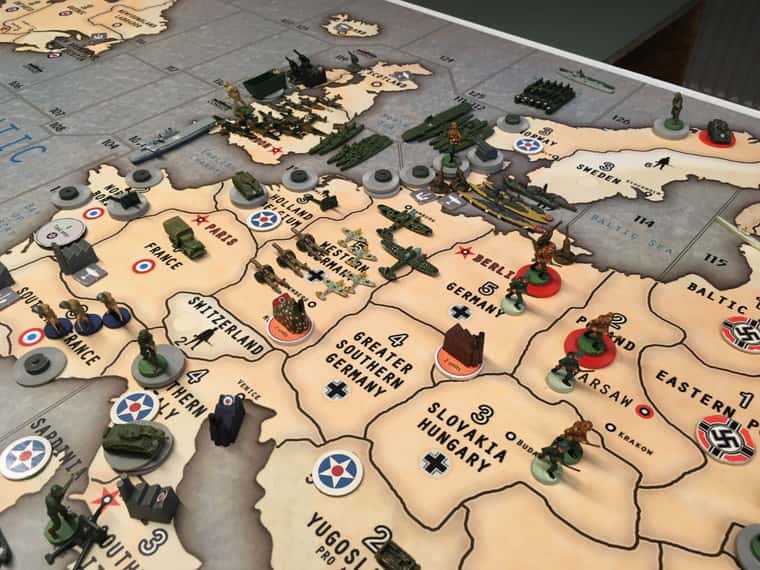

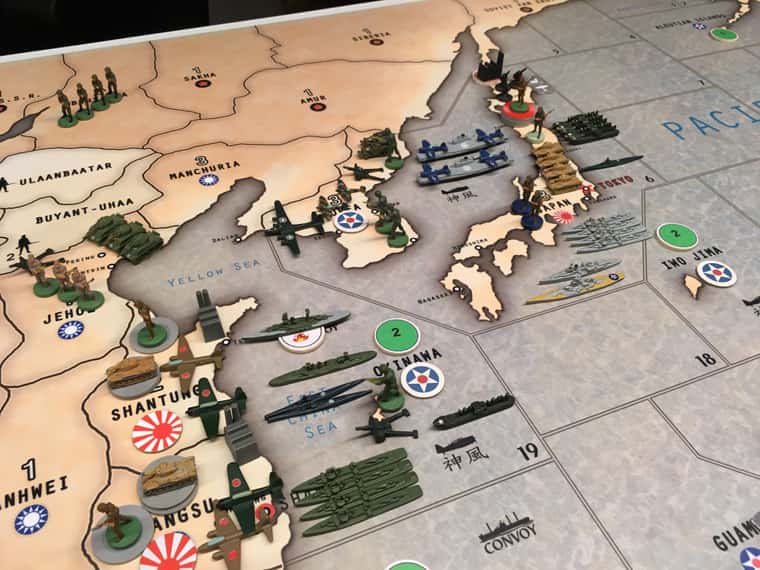
Very cool and sad for the Axis!
I promise you that if the Axis wins this game, I’ll get a haircut.
Pictures and Military Situation has been added to the Global 1943 No. 4 Game Report.
Included are pictures from the Battle of Kursk.
Just looking back at this game report. Why didn’t the Soviets use their Soviet Mass Tank Production on turn 1 to save a few bucks?
@the-captain said in Global 1940 & 1943 Expansions Game Reports:
Global 1943, No. 3 Game Report: Round Early 1943 (round 1):
This Global 1943 two-player game has just begun today. For the first time we play a Global 1943 game by e-mail.
To make this Game Report more managable, we’ll post a new thread for each round.
Here is a brief situation report:
Players:
Axis: The Captain
Allies: Keld Rasmussen
I mean this game (I deleted everything from the post except the first few lines to make things more manageable.
Maybe Germany did something wrong on turn 1 ?
Not normal for Germany to be this weak.
Probably just The Captain being The Captain.
With another victory under your belt, I can safely say you are the Axis and Allies 1940 and 1943 House Rules Expansions Grand Champion.
It is true that the cost for Soviet Tank Mass Production should have been 47 IPC for 12 Tank units.
As I recall, we discovered this flaw within 2-3 rounds - and if I remember correctly, USSR were allowed to place units worth 3 IPC in any Soviet controlled territory.
I believe that this mistake could happen since we did not play Face to Face - but played by e-mail.
When we play FTF, we always go through the economy together to minimize mistakes.
Good observation by the way:muscle:
I went ahead and cleaned up my table, containing the 1943 setup of the House Rule Expansion.
It was just lying there, untouched for months. I found it a bit too overwhelming. The turns took a bit too long and I didn’t want to randomly just do something.
So I cleaned it up and lied down the 1940 setup instead. I am much more familiar with this one.
And now, I am eager for making a full game report of this game, posting per round, and with a lot of pictures.
So I will go ahead and post the situation of the Game Start. Round 1 will follow soon.
Global 1940 House Rule Expansion, a solo game by VictoryFirst
No. 1 Game Report: Round: Game Start
Brief Overview of Strategy
Axis:
Germany will focus a lot on building U-boats. Italy will be supported in the Med with Luftwaffe units. No serious attempt will be made to conquer Egypt.
Japan will make a swift J2 attack. It will try to conquer China and build a strong navy. With this navy, it will try to conquer some valuable Pacific islands. Then, with a strong economy and a strong land force, India will be threatened.
Italy will be as annoying as possible, by building paratroopers and LCVs. Lots of infantry will be produced to guard the coastline in the Med.
Allies
The UK will do a Taranto Raid, attacking parts of the Italian fleet on the first turn, so that the Italian navy is weakened. It will also build up a large air force to project a lot of power in various areas.
The USA will focus mostly on Germany. It will build a sizeable fleet in the first few turn in The Pacific, in order to form a force that could threaten Japanese forward positions. But for the rest of the game, it will build a massive destroyer task force in The Atlantic, to counter the German submarines. Also, a large air force will be produced, as well as a mighty transport fleet that will prepare for an invasion of North Africa and Europe.
ANZAC will build mostly submarines, to take out any Japanese transports and other small ships that are left alone in the South Pacific.
Some pictures from Game Start:
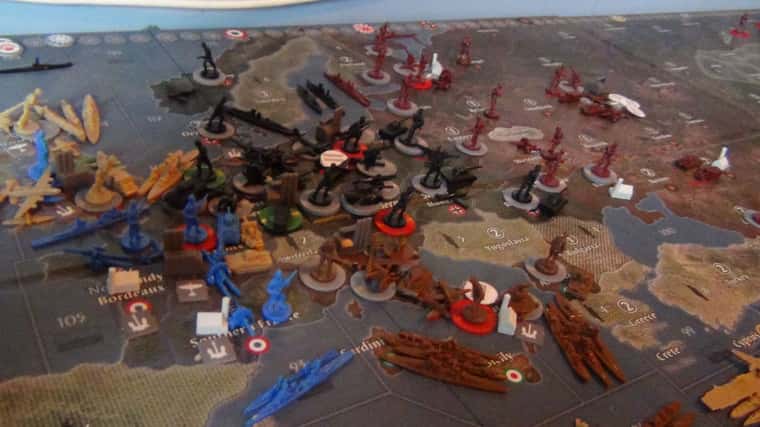
Germany, about to kill France and cause trouble in Europe.
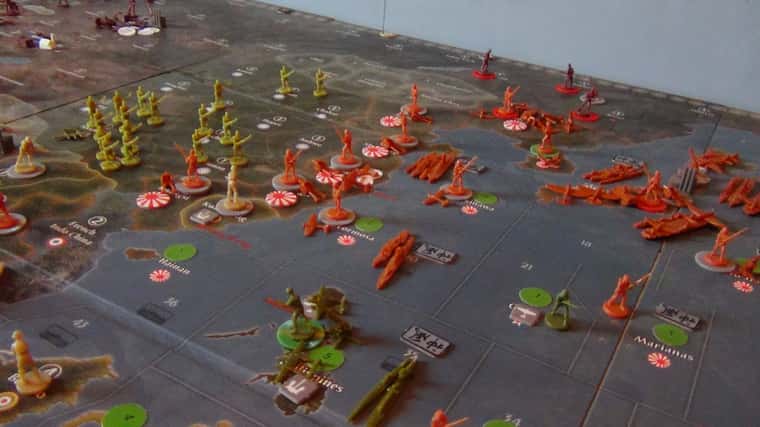
Japan, ready to strike in The Pacific Ocean and Asia

Here, I store my cut-out markers from the rulebook. I printed these on thick paper so that the markers are easy to pick up and last a long time. I store them on the edge of the board.

A full picture of my table. The unit boxes are stored underneath.
Wouldn’t the 1943 house rules expansion take less time since it takes place later in history if you’re using the same house rules? Shouldn’t each round for both games on average take the same amount of time?
Anyhow, both games look daunting and complicated for someone who hasn’t played either yet.
That looks awesome:+1:
I’m impressed by the detail in the counters that you have cut out.
Great report:muscle:
Global 1940 House Rule Expansion, a solo game by VictoryFirst
No. 1 Game Report
Round: Early 1940 (Round 1)
Germany:
Germany purchased five U-boats and upgraded six infantry and two artillery units to Waffen-SS troops. It then attacked various territories. All of mainland France was conquered, including Paris, with the capitulation of France as a result. Yugoslavia also fell. Numerous British naval ships in SZ 106 and 111 were sent to the bottom of the Atlantic. During NCM, Bulgaria and Finland joined the Axis. Three German aircraft landed in Rome for bolstering the defense of Italy, and the rest of the German Luftwaffe landed in Western Germany. AA guns moved west to guard the coastline. Other combat units moved east, in preparation for Operation Barbarossa.
Germany collected 84 IPCs (-1 lost to blockades)
Soviet Union:
Soviets purchased one Elite, two infantry, six mines, two tanks, and one Commissar, and saved 7. Combat units moved west to form a defensive line. They concentrated their forces in Belarus and Western Ukraine.
In the Place Units Phase, the 1st Soviet Army Corps was formed, containing a Commissar and three Tank units. Soviet Union ended with 44 IPCs
Japan:
Japan produced three transports and one elite infantry, and saved 5. It started an offensive in China, and conquered several Chinese territories, including Yunnan. In the NCM phase, the Japanese air force was concentrated in Kwangsi. Most of the Japanese fleet moved to SZ 36, in preparation to surprise attack the Colonial Powers in Asia. Japan ended the turn with 53 IPCs.
United States:
The US built some naval units, including an Aircraft Carrier, and two fighters. It also demolished the Air and Naval bases in the Philippines, in case of an attack. Four fortifications were built in the Philippines as well. Numerous naval vessels moved during NCM, in particular in the Pacific. Most of the US air force moved to Wake Island. The US collected 52 IPCs.
China:
China successfully recaptured Yunnan from the Japanese.
United Kingdom:
The British purchased a fighter, some land units, and two air/naval base destructions. It executed the Taranto Raid; it attacked and destroyed parts of the Italian fleet with Naval and Air units. Interestingly, the Germans decided to scramble in one of the battles, to eliminate as many UK forces as possible. The UK also successfully attacked Ethiopia. Air forces landed in Malta, and land units moved into Egypt, some by rail. Sumatra joined the British Empire; an AAA and an infantry unit moved into its territory. Troops in India moved forward to Burma and Shan State. The naval bases in Malaya and Kwangtung were destroyed
The British collected 61 IPCs, ended with 59 (2 lost to blockades).
Italy:
Italy bought two Paratroopers. It attacked Tunis and British naval units that were left over from the attack of SZ 97. It ended with 16 IPCs.
ANZAC:
The Australians purchased a sub, moved into Java, and collected 21 IPCs.
IPC Totals:
Without bonuses:
With bonuses:
Some pictures of the situation at the end of Early 1940:
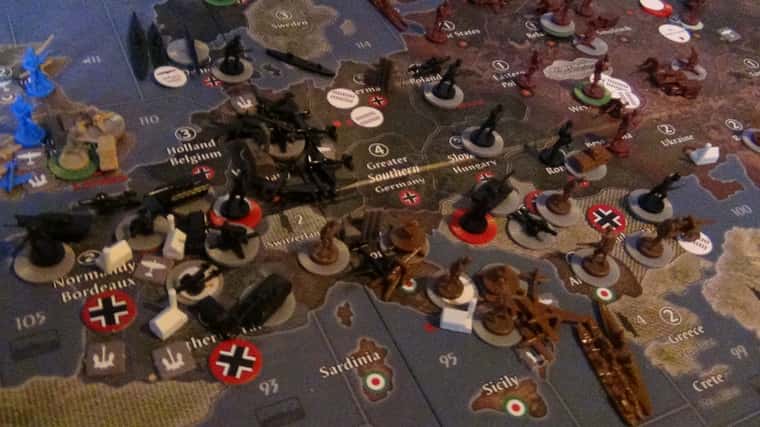
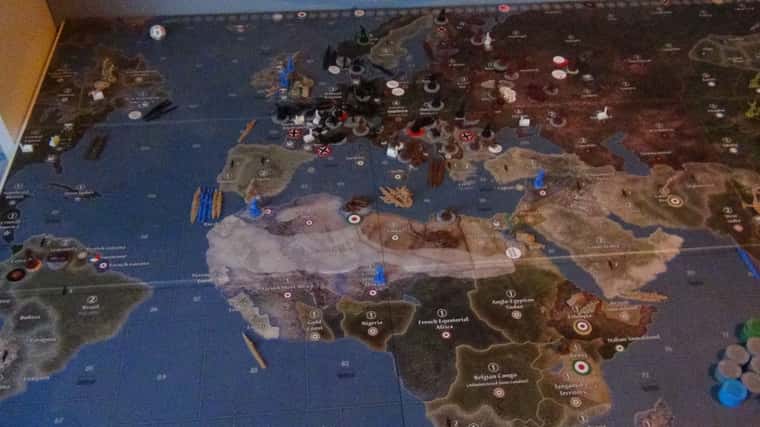
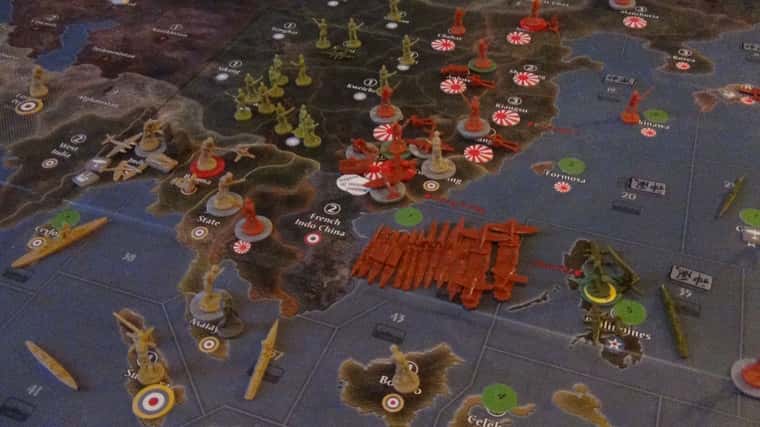

Nice report! Very detailed!
Global 1940 House Rule Expansion, a solo game by VictoryFirst
No. 1 Game Report
Round: Late 1940 (Round 2)
Germany:
Germany’s purchase:
5 U-boats
1 Panzer General
1 Elite
10 Infantry
4 Paratroopers
1 Destroyer
No combat took place during this turn.
Germans moved some more units East. The U-boats in the Atlantic scattered, and took positions in Convoy Sea Zones of the UK. A new air force moved to Rome, replacing the old one, which was eliminated during the Taranto Raid. 1st Panzer Army was formed in Berlin. Collected IPCs: 66.
Soviet Union:
The Soviet Union continued to build up the defensive lines on the German Front. It purchased another six mines, a Commissar, and two Tank units, in preparation for forming the 2nd Soviet Army Corps in Moscow. The Soviets ended the turn with 53 IPCs.
Japan:
Japan purchased two minor factories, as well as some naval units.
Japan made a Declaration of War on this turn against the Western Powers. It continued its advance in China and conquered several Chinese territories. Malaya and the Philippines were successfully attacked and conquered.
French Indo-China was forced to join the Japanese Empire.
During NCM, Japanese aircraft moved into Siam, Kwangsi, and Japan/SZ 6, to threaten as many territories and sea zones as possible.
Japan placed factories in Shantung and Kiangsu.
United States:
The US purchased naval units. They attacked a U-boat Wolfpack in SZ 6 with two naval units and four air units. However, only two U-boats were killed, and both American naval units were destroyed.
In the Pacific, the Americans regrouped their navy and moved into offensive and defensive positions. One AC with two fighters moved south to SZ 54, to support ANZAC. The AC and two DDs were placed in SZ 10, and three DDS and a sub in sz 101. The US collected 81 IPCs.
China:
China again successfully recaptured Yunnan.
United Kingdom:
The UK purchased some air and land units and built four forts. Brazil and Persia joined the war on the Allied side, both on behalf of the UK. Sumatra was reinforced with infantry units and fortifications. One fort was also built in Borneo. A large force from Burma moved into Yunnan - to support the Chinese. The air units were placed in London, three tank units in South Africa, and infantry units in India.
The British collected 58 IPCs but ended with 48 due to blockades by the German submarines.
Italy:
Italy built land units and paratroopers. It attacked Greece and Algeria. Syria was invaded by Paratroopers. The Italians also moved some units East, to help out the Germans in Operation Barbarossa.
ANZAC:
built two subs and a destroyer. It attacked a couple of Japanese naval units. It also moved a fighter to Sumatra, to help with the defense.
France:
Not a lot to report from France, except that they made one funny little move: they moved their African destroyer to the Pacific, to SZ 41 near Sumatra, in order to protect the UK transport :)
Income totals:
With Bonuses:
Without Bonuses:
Some pictures that depict the situation in Late 1940:




